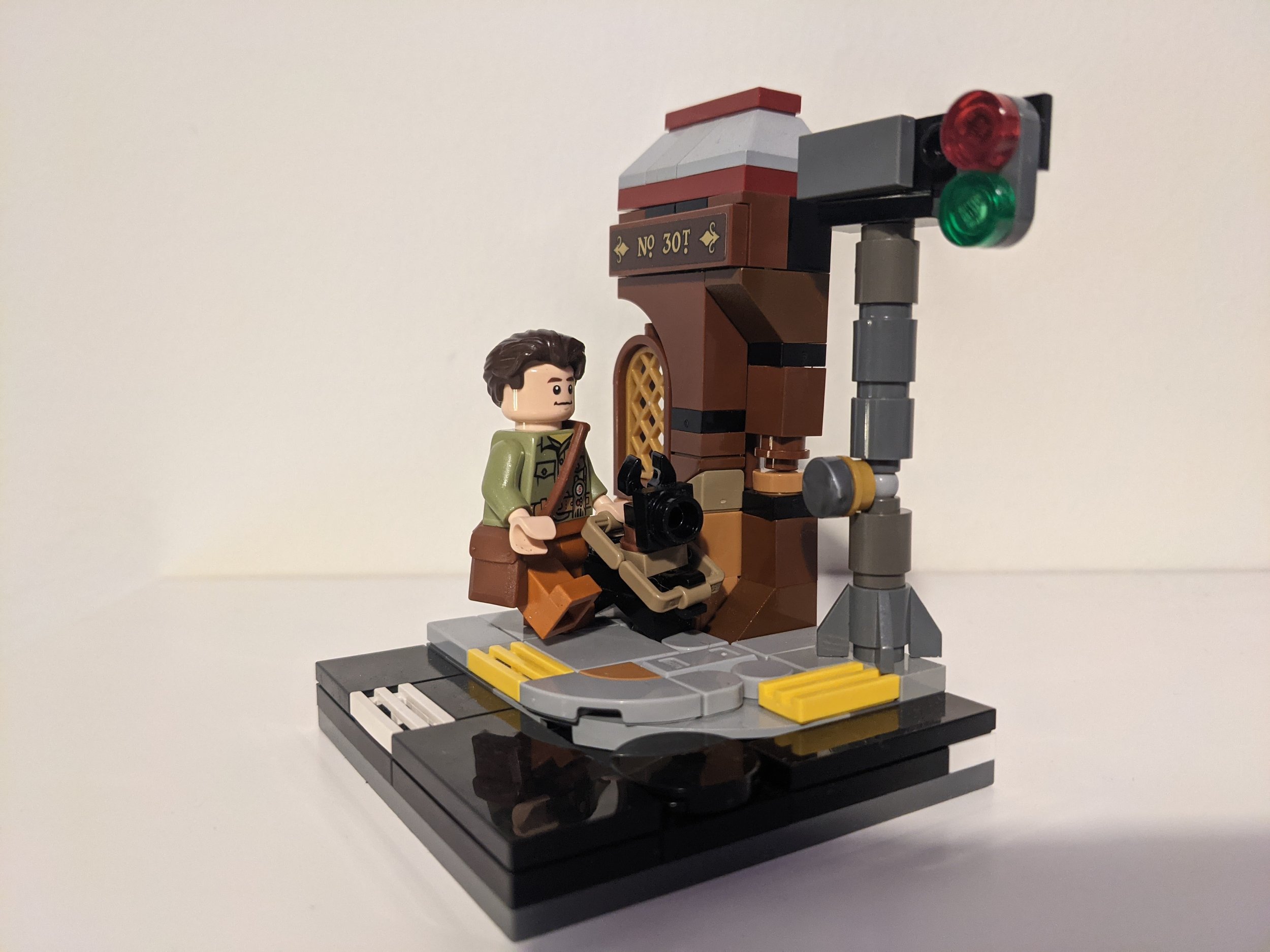Emerging From The Dark Age: An Interview with Jack England
/If you saw my recent article about the California LEGO convention Bricks by the Bay, you may have noticed the gorgeous MOC of a portrait of a dog used as the cover image. The MOC is actually a memorial to builder Jack England’s beloved pet, Arden. Jack works professionally training seeing eye dogs, and while Arden wasn’t a fit as a service dog, he found service as man’s best friend. Arden lives on in this exquisite piece of art.
Jack’s other MOCs—which involve a variety of styles, NPU, and fresh techniques—all caught my eye. It was hard to believe that Bricks by the Bay was Jack’s debut in the AFOL community; I welcomed him with Nerdy gushing, and he honored me with an interview.
Gwyneth Kozbial: Please start off by telling us a little about yourself. Where are you from, and how long have you been involved with LEGO building?
Jack England: I am from Salt Lake City, Utah originally, and now live in Emeryville, California. I am 30 years old. I built LEGO as a child through Junior High, then stopped like many others. l got my first set as an adult during COVID and have been building ever since (2+ years). As a kid, I mostly built sets then I made up my own things—but nothing as a serious project. As an adult, my interest has been primarily in MOCs; I mostly have interest in sets only for the parts.
Gwyneth: You must have built quite a foundation as a child to come up with these creations in only two years. How did you come out of your Dark Age?
Jack: What primarily sparked my interest in LEGO as an adult was watching the first season of LEGO Masters, combined with looking for things to do during the pandemic. Before seeing the show, I had never really thought about LEGO as an adult, since (unfortunately) selling a lot of my collection before I started college. I was amazed at the variety of new parts and colors and what the contestants were able to sculpt. From there, I jumped into the online community to see all the amazing MOCs out there for inspiration.
Gwyneth: Many builders took up LEGO during the pandemic to cope with the isolation. Are you part of a LUG or online building community? This is the first I've seen you at a convention, and your online presence is even newer than that.
Jack: After seeing Flynn and Richard on LEGO Masters and learning they lived in the Bay Area, I participated in some of the TrickyLUG challenges which have sparked the inspiration for many of my builds. I also met a lot of awesome people from BayLUG at Bricks by the Bay (BBTB), so I am interested in joining them as well. BBTB was my first convention. I've shared some things on Reddit before, and I just recently started an Instagram account for my builds (@Ardent_bricks). My partner is very supportive of my hobby and even lets me display my MOCs in the living room!
Gwyneth: TrickyLUG is a really supportive community; I love their challenges. Do you have other hobbies that play into your LEGO building?
Jack: This is one of my primary hobbies right now, at least as my outlet for art. Others include rock climbing and juggling.
Gwyneth: How did you begin MOC building? What was your first AFOL creation? We’d love to learn more about your process.
Jack: It's hard to say what my first real MOC was as I had to make the most of limited pieces initially. I enjoyed the challenge of puzzling together pieces to sculpt an organic shape and figuring out unique ways to connect them. I tried making a bust of my pug's face. I thought it was pretty successful, despite the wrong colors and lack of pieces to finish it. Not too tough a process.

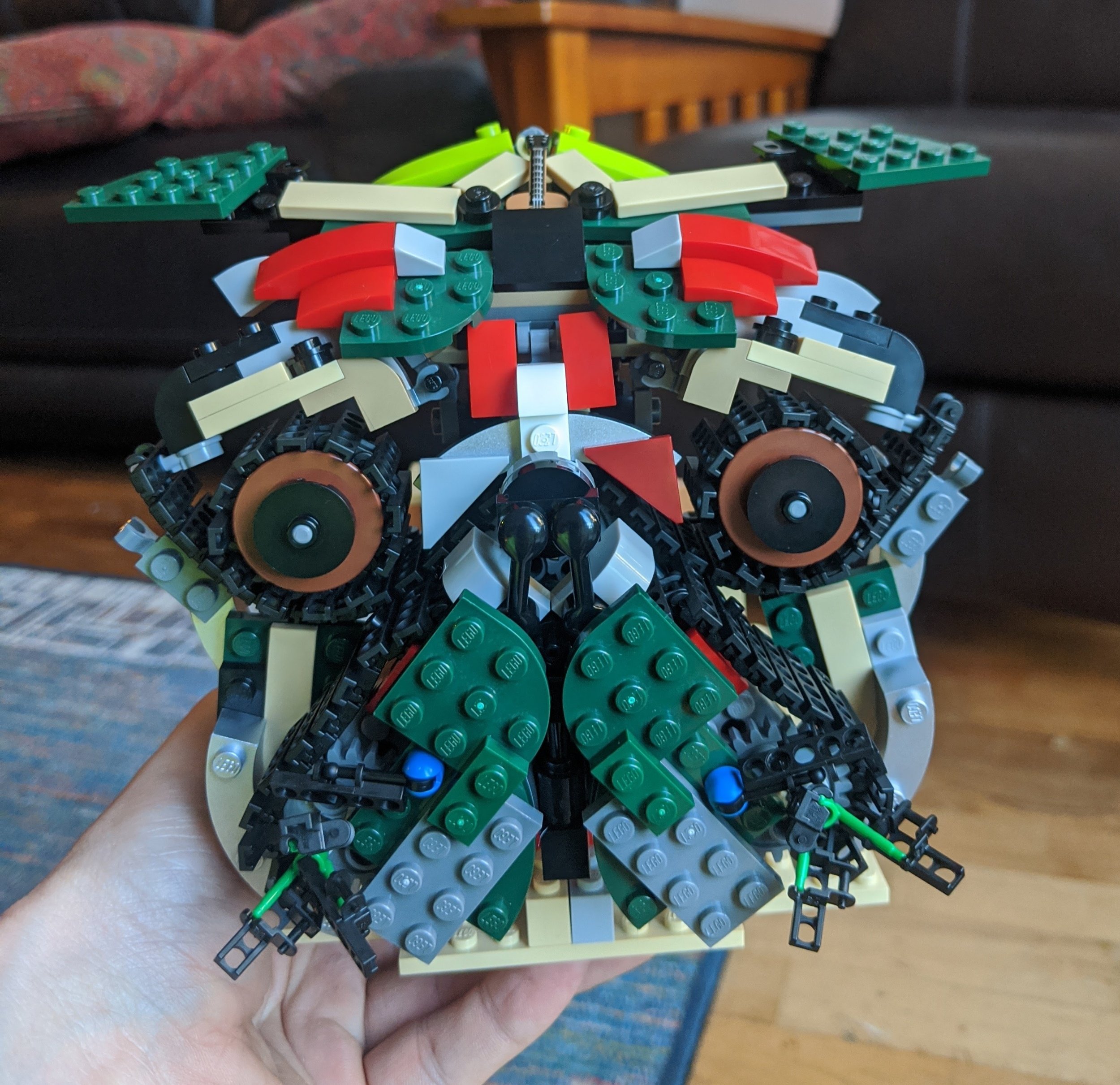
My first large-scale MOC was for a two-week free build challenge. It started with a jellyfish made of mostly translucent orange parts. I decided to make the base the mouth of an anglerfish with the jellyfish attached as a deceptive bait with a light glowing. I made a scuba diver unsuspectingly swimming toward the enticing light to complete the scene (dark, I know).
This build was a huge challenge compared to previous ones, as I was quickly trying to scale up the open mouth of the angler fish, without focusing on structural integrity very much.
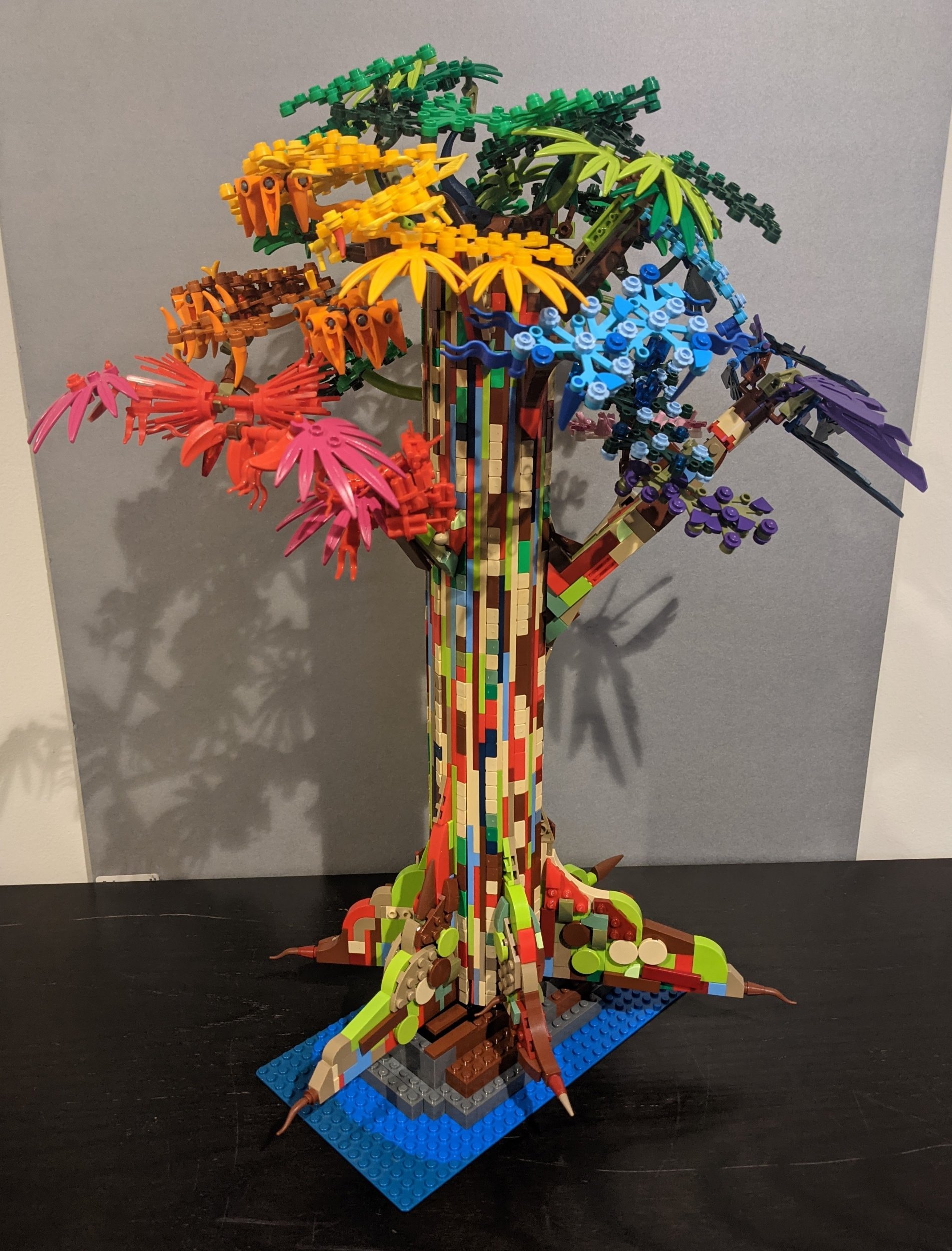
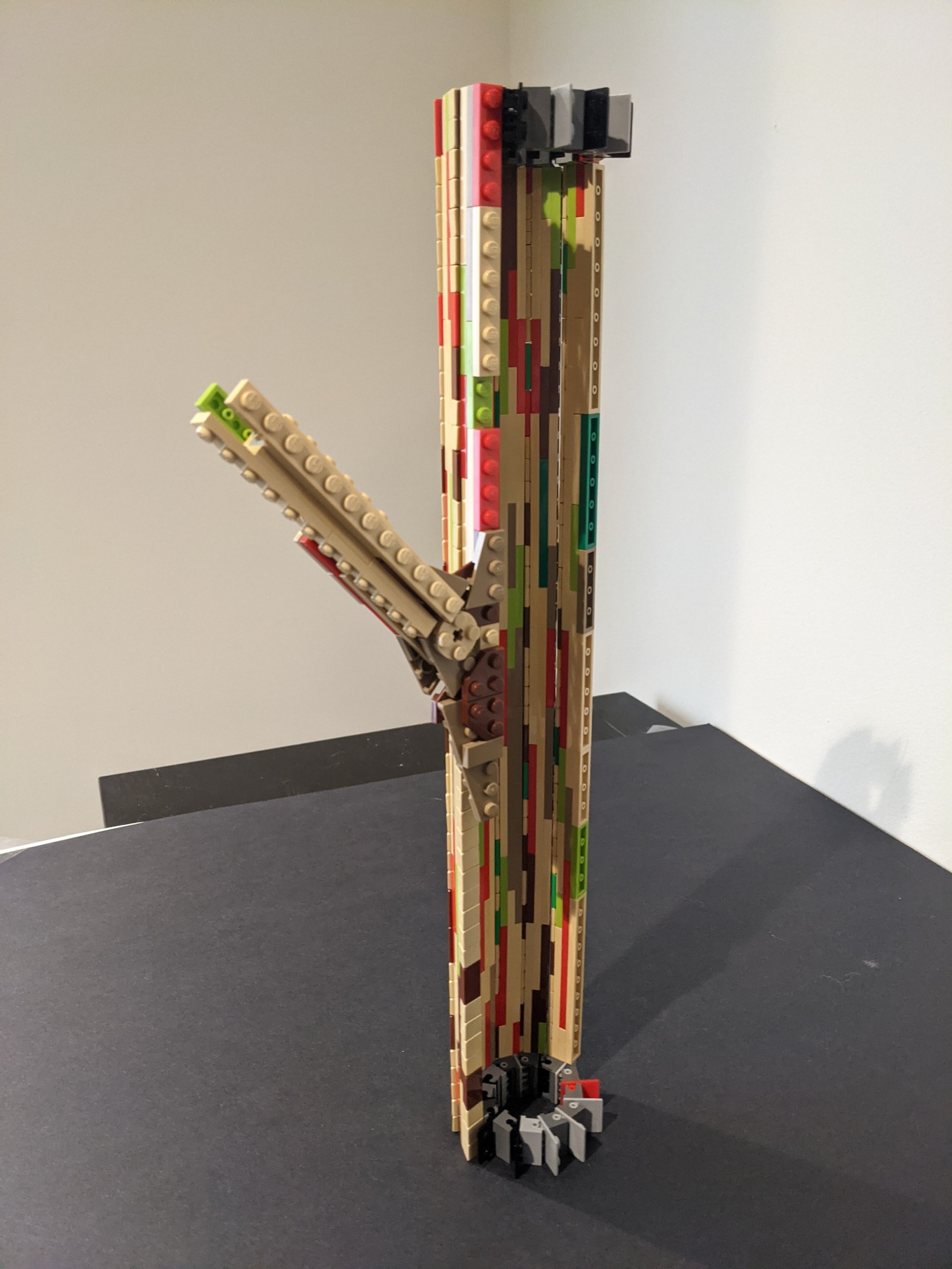

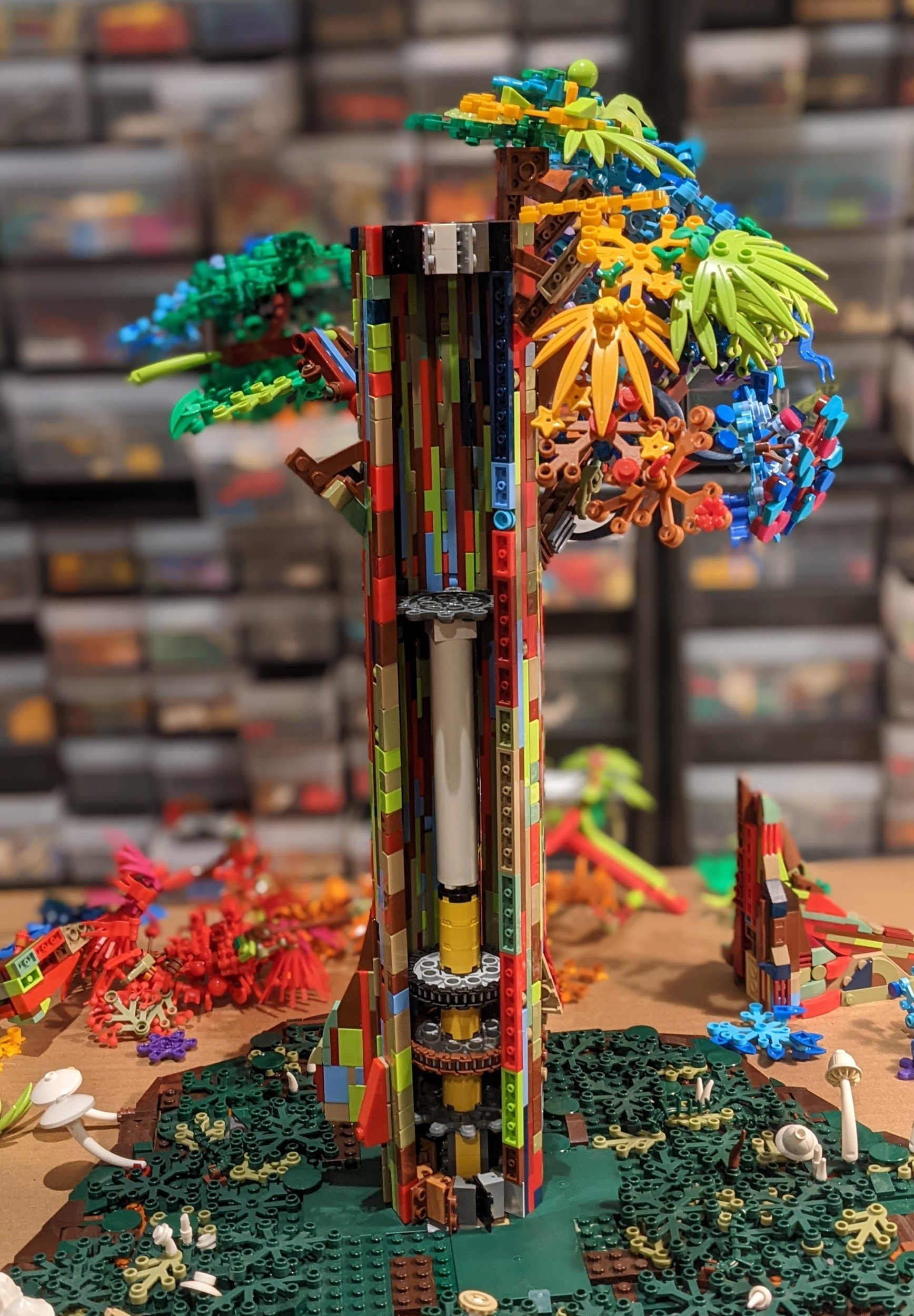

The rainbow eucalyptus tree I built soon after was of similar scale and became a challenge as I added more and more detail to the foliage. I discovered the technique for the trunk trying to make a cylinder shape with hinge plates on their side and using cheese slopes to fill in the gaps and make it smooth all the way around. I have had to rebuild the tree three times, the first being to change the colors of the bark, the second to fortify the hollow inside of the tree, and the third after it fell from an accident in transport. Each rebuild I was able to further add to the structural integrity, but that is still a learning curve for me as I focus mostly on aesthetics.
A lot of my building starts from discovering an interesting technique or seed part, then expanding from there. I try to allow the process to be as organic as possible, though I've recognized with each one that at least having a rough big picture planned out is helpful, especially for structural reasons. I often work from photos and references.
The process of making the mosaic portrait of Arden was a completely different process from previous MOCs. It almost felt closer to painting than building with LEGO with the wedge plates giving an interesting relief effect that also produces effective brush strokes through what is exposed. I used BrickLink Stud.io to design it and figure out the right colors before ordering the parts to make it. I want to try more mosaics in this style focused on depth, contrast, and bringing the subject to life.
Gwyneth: Thanks for sharing your process. There’s always so much more than meets the eye. Do you have a large collection of building pieces? Do you collect sets? If so, do you "borrow" from them?
Jack: I would say I have a fairly large collection of pieces, at least to make small-medium MOCs. I've collected mostly bulk LEGO versus sets, and have stopped accumulating significant amounts for now. I definitely borrow parts from sets if I need them. If I need specific parts I source them from BrickLink, but I try to make it work with what I have. For example, I saw the Batman Clayface set for sale online, and the sandstone colors inspired me to build a model of the Delicate Arch.
Gwyneth: Your profession is unique. Does it influence your LEGO work in subtle ways?
Jack: I feel that my work in training service dogs is a reflection of my passion for working with animals. I also enjoy wildlife photography, and I have done several pet portraits in pencil and pastel in the past. I view LEGO as an art medium like any other, and I enjoy attempting to sculpt organic forms with a focus on color, texture, and interesting part usage. My work so far in LEGO is mostly influenced by the natural world and draws inspiration from all the amazing builders out there.
Gwyneth: What is the most challenging part of building? Do you have projects in progress or on the horizon?
Jack: Most of the challenges I encounter in my building come with trying to make curves and organic shapes appear realistic, and I draw motivation from those challenges. I love the satisfaction of bringing a photo or figure to "life" through LEGO. My next project on the horizon is another relief mosaic of a black bear emerging out of a meadow toward the camera (from a photo I took on a recent camping trip).
Gwyneth: I can’t wait to see it! And whatever other builds pop up.
What type of MOCs were you building just two years out of your Dark Age? Let us know in the comments below!
Do you want to help BrickNerd continue publishing articles like this one? Become a top patron like Charlie Stephens, Marc & Liz Puleo, Paige Mueller, Rob Klingberg from Brickstuff, John & Joshua Hanlon from Beyond the Brick, Megan Lum, and Andy Price to show your support, get early access, exclusive swag and more.








